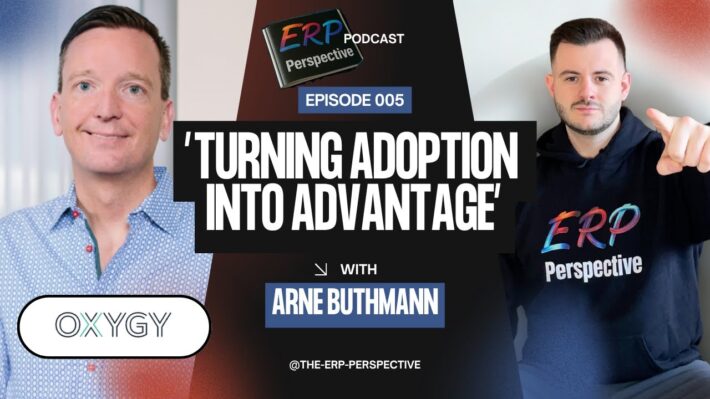By Thomas Bertels & Marjorie Derven
Companies everywhere are struggling to keep up with the accelerating pace of change, fueled by the forces of technology, globalization, consolidation and the financial markets’ unrelenting pressure to perform. Add to that executive turnover and leadership changes (with concomitant shifts in strategic direction, operational priorities, and resource allocation), it becomes clear that the ability to effectively manage change – enabling stakeholders to successfully adopt new strategies – is a crucial capability. Yet, most organizations exhibit a less than optimal, one-size-fits all approach to change management. This article advocates for right-sizing and tailoring the change management approach to the specific challenge.
Avoiding the extremes
At one end of a continuum, change management is frequently an afterthought, considered only after key decisions are made. At the other extreme, many organizations take a time-consuming, cookie-cutter approach to change management, deploying generic templates and mechanistic approaches that fail to address core issues. Not surprising, the failure rate for transformations is estimated to be as high as 70%.
You can’t always win hearts and minds
Winning hearts and minds is possible — if “What’s in it for Me” (WIIFM) in fact provides meaningful benefits. However, this approach will backfire if employees will not personally experience an improvement or positive outcomes from the change – for example when their role is being eliminated or their autonomy is being constrained. In cases like that, instead of trying to ‘sell’ employees on the idea it will be more effective to:
- Treat employees with respect and transparency throughout the process and provide a fair process (safe exit) for those that do not have a role in the future state.
- Invest in employees to help develop portable skills that enable them to be more successful going forward, including enhancing personal agility.
- Provide clear “guard rails” about change priorities, defining non-negotiable requirements, along with space to innovate or adapt to local factors as relevant. Engaging employees to participate in shaping solutions, where possible, builds not only great buy-in but often promotes superior design.
Key Success Factors: Timing, Sizing, and Tailoring
The keys to success: Integrate change management seamlessly into the transformation initiative as soon as possible; size and scope the effort to match the organization’s readiness; address relevant stakeholder issues with a highly-targeted approach, and most importantly: tailor the approach to the change context.
Consider the change management implications right from the start
Change management should start as soon as the discussions about the need for a change are being initiated. Often, key decisions are made early on without appreciation of the impact on the organization and the need for buy-in from key stakeholders. As a result, opportunities to engage key players right from the start are missed.
Recommended Actions:
- Align senior leadership on the case for change.
- Jumpstart employee engagement with identified opportunities to scope the project or shape solutions.
Sizing the effort to match organizational capacity
Organizations have varying degrees of readiness (fitness) for managing large scale change. Some have a solid track record of successfully executing change; a leadership team that has credibility; a supportive culture; and appropriate resourcing. Others have weak communications, a leadership team that isn’t trusted, and a lack of alignment. To be successful, the scope of the change effort needs to be in line with the organization’s capacity to handle change: a supportive culture, effective leadership and the ability to execute. Consider reducing the initial scope if the organization is ill-prepared – a narrowly scoped and well supported lighthouse project can pave the way for the full implementation.
Recommended Actions:
- Assess the organization’s capacity to successfully implement change.
- Consider reducing the magnitude of the change to increase the likelihood of success.
Tailoring the approach to the type of transition
Organizational change must be viewed in the context of the business life cycle, where phases of growth, plateau and decline are followed by re-invention and adaption – or dissolution.
The STARS Model, as described by Michael Watkins for executive transitions and onboarding, provides a useful framework for transitions at the organizational level as well. The model offers a lens to think about what kind of change management will be most effective:
- Start-ups are inherently characterized by rapid change. With energy often high, there is opportunity to harness a sense of shared purpose. Being able to quickly pivot and align the business model to where the opportunities are is crucial during this stage of the business cycle. As the organization scales, change management becomes crucial to avoid chaos and confusion – with all the trains running on the same track, avoiding collisions becomes paramount. In a start-up, change management often means air-traffic control.
Turnarounds, while often difficult, offer a compelling reason for change: with an existential threat to the business, employees can quickly see the need for change. If they perceive a clear path forward, have an opportunity to participate and help shape a new future, they will be more willing to be actively engaged. Here, the crucial change management function is delivering the facts to the organization, facilitating the difficult decisions, and creating space for the remaining employees to engage and rebuild – by eliminating bureaucracy, speeding up decision-making, and right-sizing the operating model. - Accelerating Growth are times where pressure is on to continue to show increases, which can be challenging when there is a past trajectory of continuing success. “Why fix it if it is not broken” is the mindset that prevents the organization from decisively tackling a finite number of change efforts that will build the foundation for future success. The key to succeed is to engage a broad coalition of stakeholders to ensure organizational buy-in and to clearly communicate the strong link between the changes and sustained success – and the benefits the stronger foundation will deliver to the organization and its members.
- Realignment: Arguably, this is the type of change most often undertaken today. Businesses that are still profitable, but facing slower growth or competition undertake restructuring, new business models and other change to get ahead of potential decline. This scenario often presents challenges to articulate the need for change to employees, as the threat to the business is not imminent: the organization is still returning decent results.
- Sustaining Success can be problematic when complacency sets in—the challenge is to avoid the danger of assuming that a market leading position is assured. Here, the opportunity for change management is to help employees anticipate how the business could fail, and provide opportunities to preempt the treat. In the late nineties, Jack Welch, realizing the potential of digital technology to threaten GE’s business model, challenged the organization under the headline of ‘destroyyourbusiness.com’ to assess the vulnerability of their business model.
Deploying an Agile, Right-Sized Change Management Model
Taking a page from agile software development, organizations need a new change management model that can be quickly tailored and sized: Utilizing sprints, concurrent work streams and real-time adjustment, the focus is on the 80/20 vs. perfect solutions that take too long and don’t address the rate of change that is the reality on the ground.
With the rapid pace of change, how we think about change management needs to change. With many organizational change initiatives today falling into the category of realignment, new strategies are required to optimize change adoption that is “right-sized” for new opportunities and challenges.
Using straight talk about long-term sustainability and growth, leaders demonstrate respect and transparency to employees. Change may not always be popular, but providing clarity about the objectives of change, the key milestones and what it means for various stakeholders is essential to treating people with the respect they deserve and maintain employee engagement.
Summary
The ability to right-size change is not something that can be delegated to a staff function. While organizational development professionals can help leaders with developing strategies tailored to the specific challenge, leaders at all levels need to consider the change management dimension when dealing with business challenges.
ABOUT THE AUTHORS
Thomas Bertels
is a partner at Valeocon Management Consulting. He has deep expertise in operational excellence, change management, business process design, reengineering, measurement, organization design and business model design. Working primarily with large and medium-sized companies in the pharmaceutical, chemical, insurance, and services industries for more than two decades, Thomas is focused on helping clients translate strategy into reality.
Marjorie Derven
is a director at Valeocon Management Consulting, has 20+ years of experience helping top-tier companies align and optimize people performance with strategic imperatives. With deep expertise in learning, organizational effectiveness, change management and Diversity & Inclusion, Marjorie has served as a CLO Learning Elite and Diversity Value Index Judge, Senior Fellow at The Conference Board in the Human Capital practice. Marjorie has written dozens of articles and blogs and is a frequent presenter at global conferences.
[fusion_button link=”https://www.valeocon.com/wp-content/uploads/2018/10/Article_Right-Sizing-Change-Management.pdf” title=”” target=”_blank” link_attributes=”” alignment=”center” modal=”” hide_on_mobile=”small-visibility,medium-visibility,large-visibility” class=”” id=”” color=”default” button_gradient_top_color=”#3b4251″ button_gradient_bottom_color=”#3b4251″ button_gradient_top_color_hover=”#55a098″ button_gradient_bottom_color_hover=”#55a098″ accent_color=”” accent_hover_color=”” type=”flat” bevel_color=”” border_width=”0px” size=”large” stretch=”default” shape=”” icon=”” icon_position=”left” icon_divider=”no” animation_type=”” animation_direction=”left” animation_speed=”1.0″ animation_offset=””]DOWNLOAD THE PDF[/fusion_button]






